Abstract
1. The aerobic loss of GSH added to the supernatant fraction from rat liver is much increased by including the microsome fraction, which both inhibits the concurrent reduction of the GSSG formed and also augments the net oxidation rate. 2. Oxidation occurs with a mixture of dialysed supernatant and a protein-free filtrate; the latter is replaceable by hypoxanthine and the former by xanthine oxidase, whereas fractions lacking this enzyme give no oxidation. 3. In all these instances augmentation occurs with microsomes, with fractions having urate oxidase activity and with the purified enzyme; uric acid and microsomes alone also support the oxidation. 4. Evidence implicating additional protein factors is discussed. 5. It is suggested that GSH oxidation by homogenate is linked through glutathione peroxidase to the reaction of endogenous substrate with supernatant xanthine oxidase and of the uric acid formed with peroxisomal urate oxidase.
Full text
PDF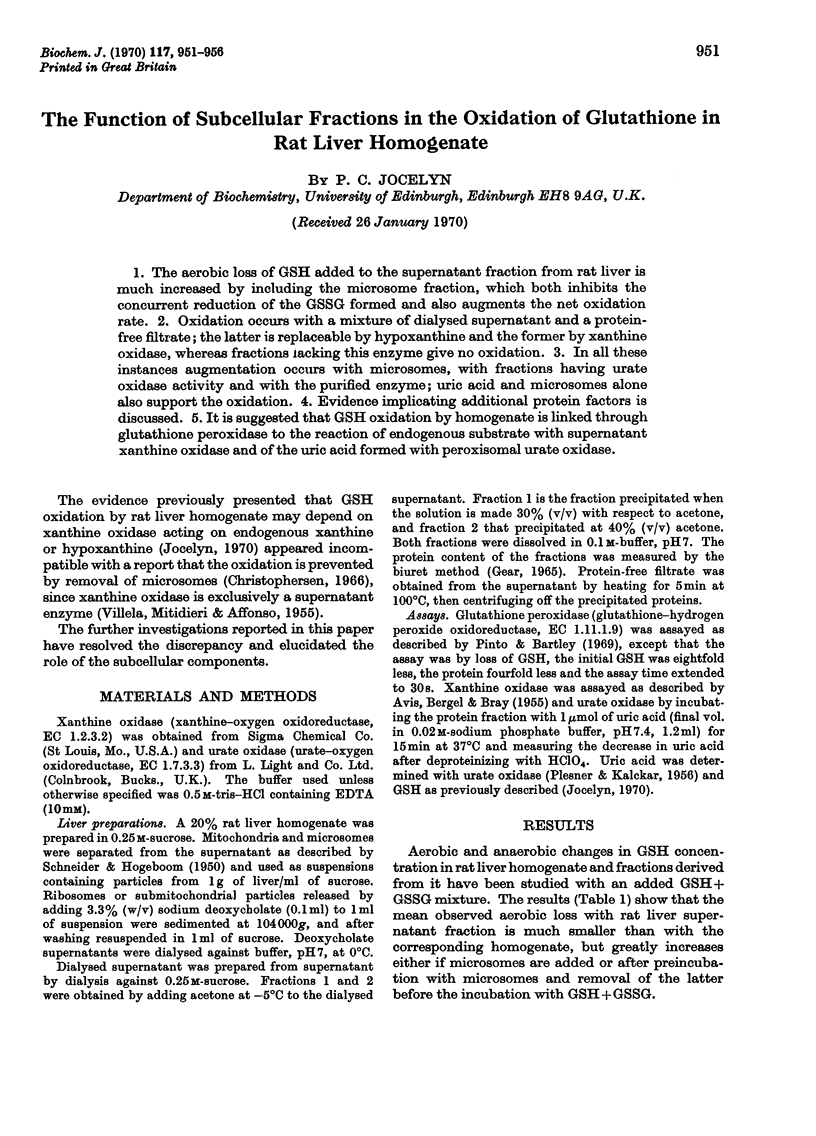
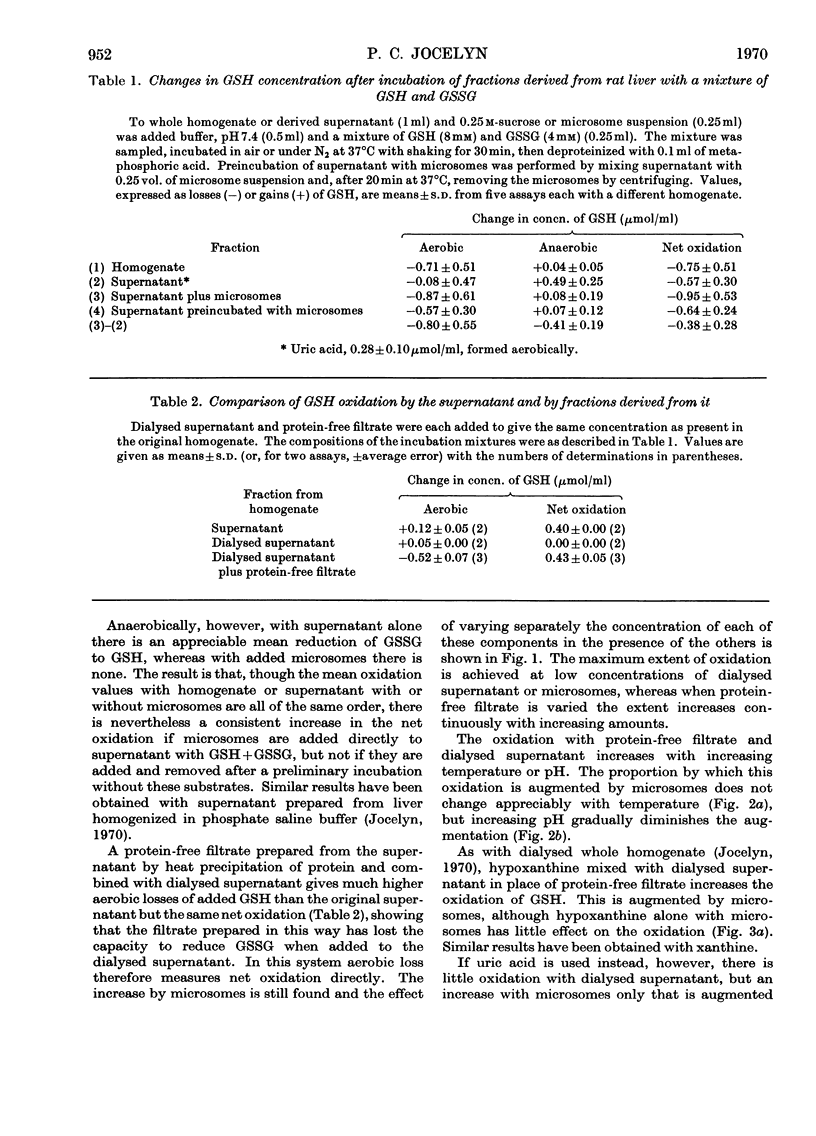
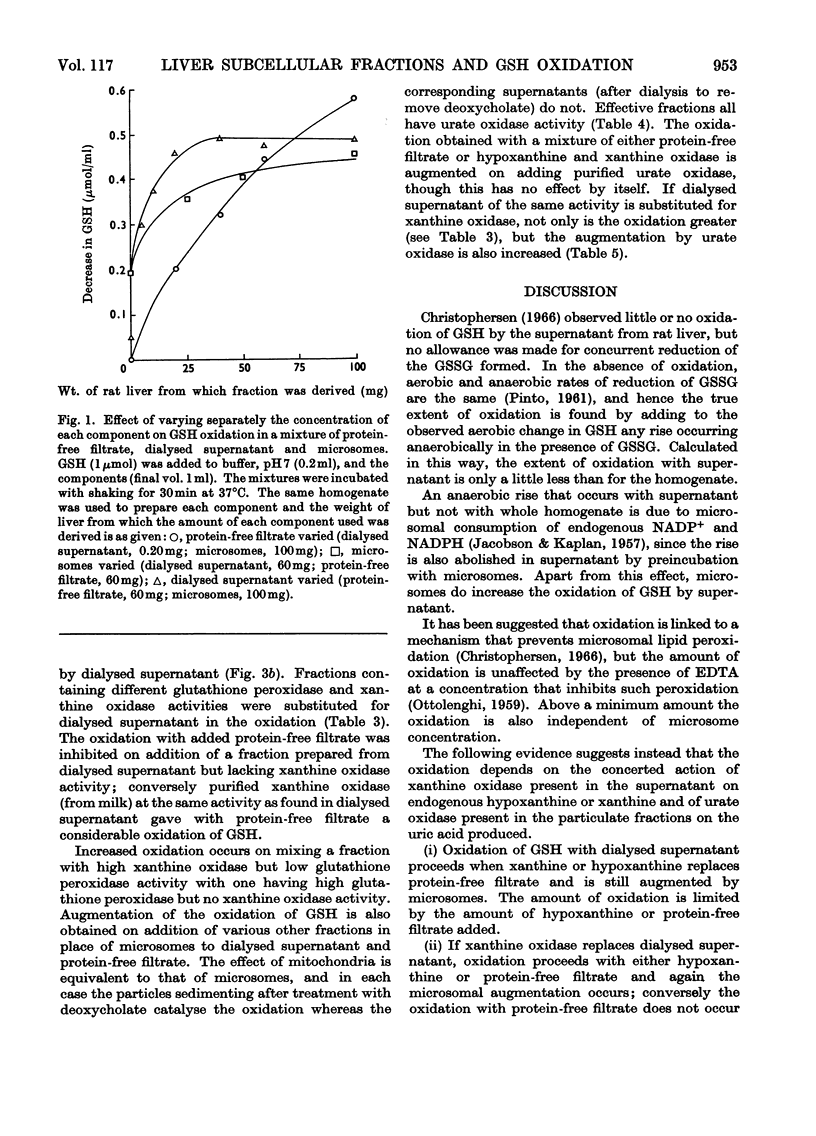
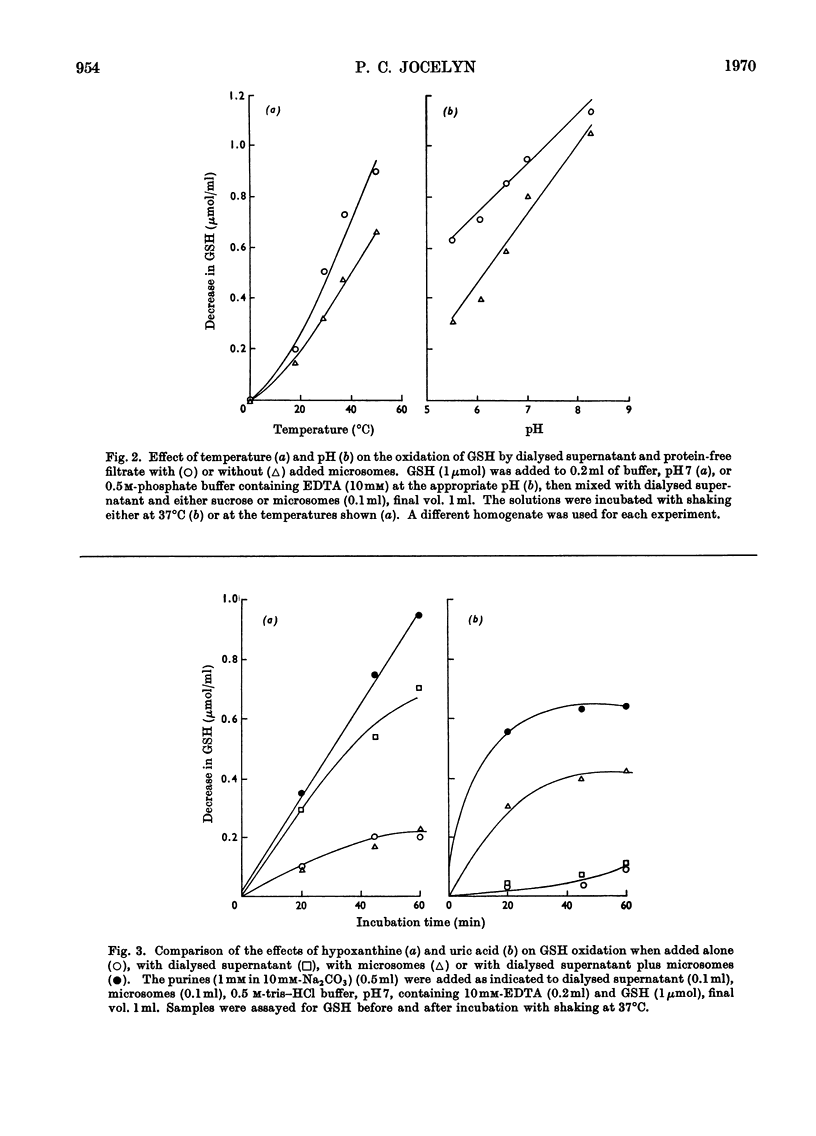
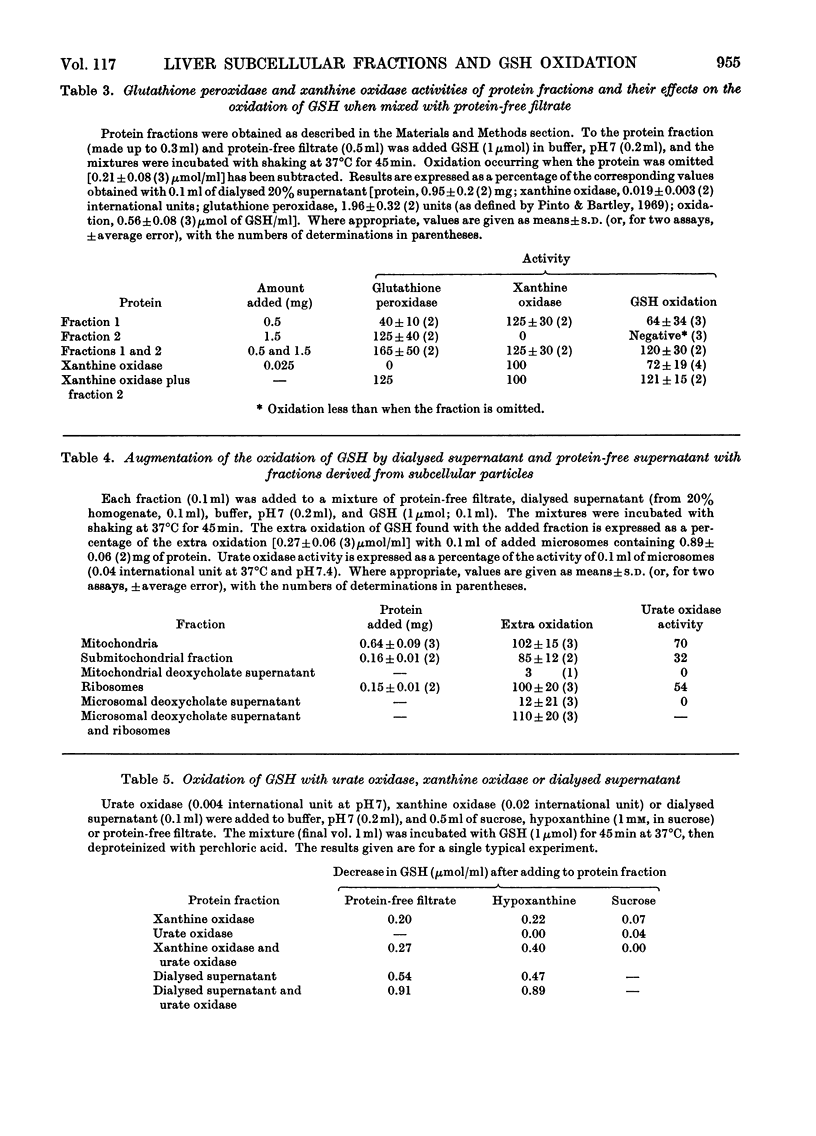
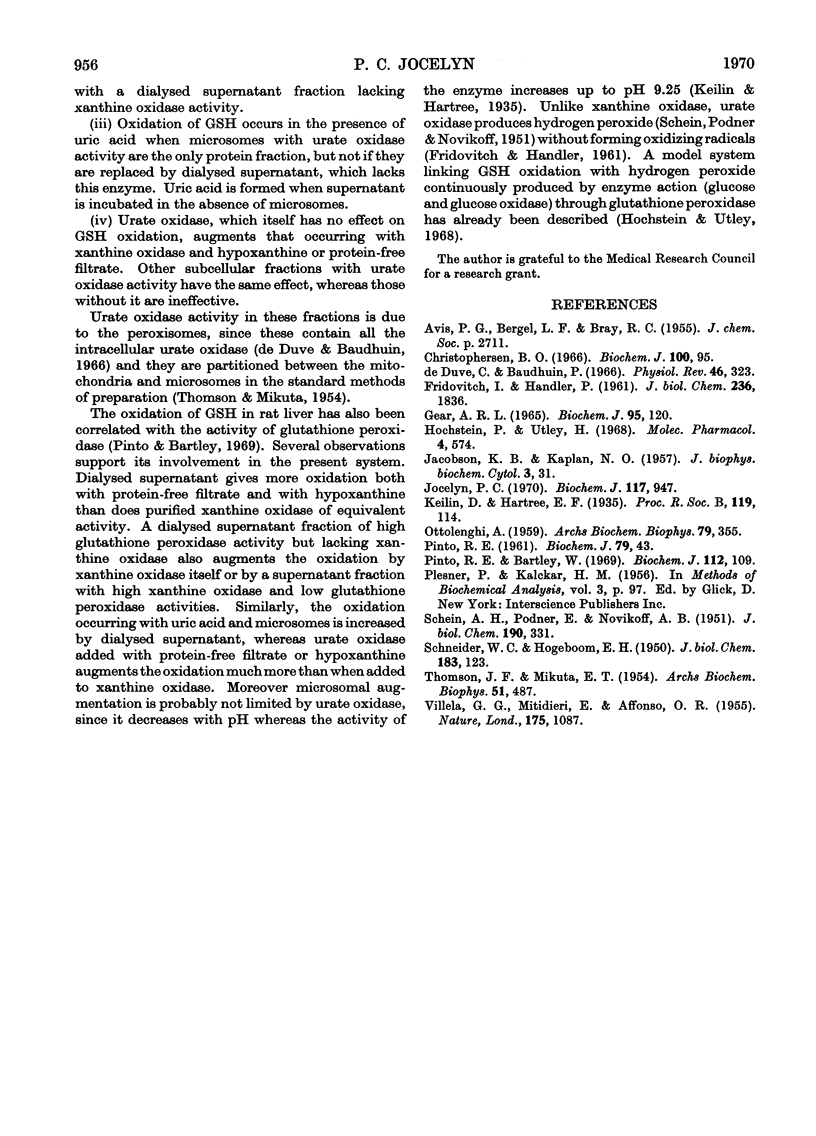
Selected References
These references are in PubMed. This may not be the complete list of references from this article.
- Christophersen B. O. Oxidation of reduced glutathione by subcellular fractions of rat liver. Biochem J. 1966 Jul;100(1):95–101. doi: 10.1042/bj1000095. [DOI] [PMC free article] [PubMed] [Google Scholar]
- De Duve C., Baudhuin P. Peroxisomes (microbodies and related particles). Physiol Rev. 1966 Apr;46(2):323–357. doi: 10.1152/physrev.1966.46.2.323. [DOI] [PubMed] [Google Scholar]
- FRIDOVICH I., HANDLER P. Detection of free radicals generated during enzymic oxidations by the initiation of sulfite oxidation. J Biol Chem. 1961 Jun;236:1836–1840. [PubMed] [Google Scholar]
- Hochstein P., Utley H. Hydrogen peroxide detoxication by glutathione peroxidase and catalase in rat liver homogenates. Mol Pharmacol. 1968 Nov;4(6):574–579. [PubMed] [Google Scholar]
- Jocelyn P. C. The enzymic oxidation of glutathione in rat liver homogenates. Biochem J. 1970 May;117(5):947–949. doi: 10.1042/bj1170947. [DOI] [PMC free article] [PubMed] [Google Scholar]
- PINTO R. E. Comparison of the aerobic and anaerobic reduction of oxidized glutathione in liver homogenates. Biochem J. 1961 Apr;79:43–51. doi: 10.1042/bj0790043. [DOI] [PMC free article] [PubMed] [Google Scholar]
- Pinto R. E., Bartley W. The effect of age and sex on glutathione reductase and glutathione peroxidase activities and on aerobic glutathione oxidation in rat liver homogenates. Biochem J. 1969 Mar;112(1):109–115. doi: 10.1042/bj1120109. [DOI] [PMC free article] [PubMed] [Google Scholar]
- SCHEIN A. H., PODBER E., NOVIKOFF A. B. The intracellular localization of uricase. J Biol Chem. 1951 May;190(1):331–337. [PubMed] [Google Scholar]
- THOMSON J. F., MIKUTA E. T. Enzymatic activity of cytoplasmic particulates of rat liver isolated by gradient centrifugation. Arch Biochem Biophys. 1954 Aug;51(2):487–498. doi: 10.1016/0003-9861(54)90504-4. [DOI] [PubMed] [Google Scholar]
- VILLELA G. G., MITIDIERI E., AFFONSO O. R. Intracellular distribution of xanthine oxidase in the rat liver. Nature. 1955 Jun 18;175(4468):1087–1087. doi: 10.1038/1751087a0. [DOI] [PubMed] [Google Scholar]


